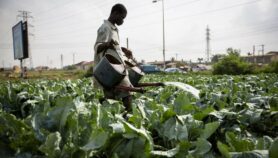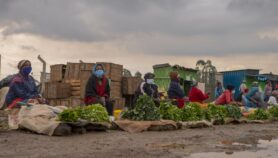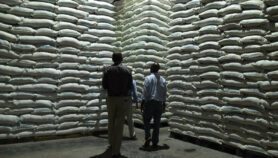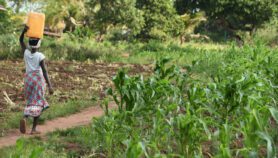16/08/21
Women, street food could answer world’s hunger problems
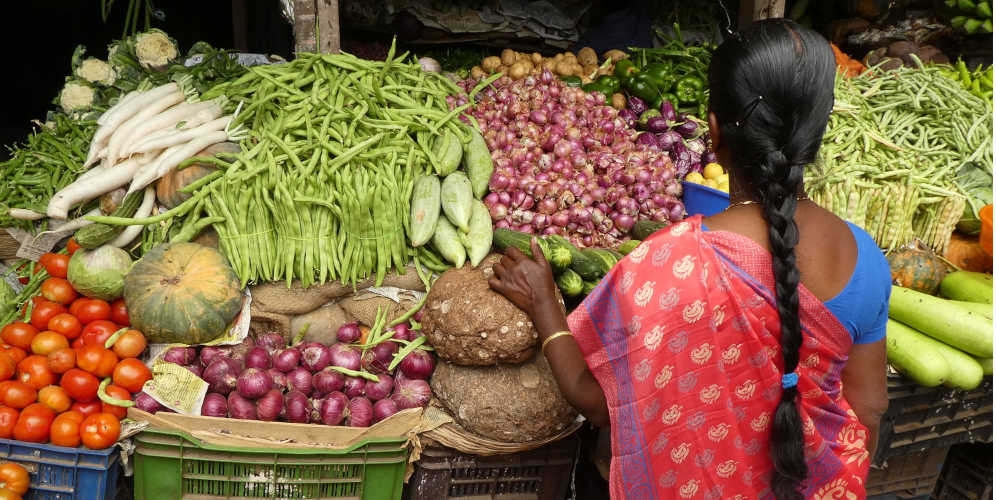
By:Inga Vesper
Send to a friend
The details you provide on this page will not be used to send unsolicited email, and will not be sold to a 3rd party. See privacy policy.
Empowering women as street food vendors and agricultural workers could be the key to beating malnutrition, writes Inga Vesper.
As you take an evening walk through Ghana’s capital, Accra, you may notice something unusual — almost every street food vendor is a woman. And those with a trained eye will notice something else: opportunity.
Women experience some of the highest rates of malnutrition worldwide. But, say advocates, they also hold the key to solving the world’s food-related health problems by tapping into traditional social structures.
TheUN estimatesthat ten per cent more women than men have become food-insecure since the outbreak of the COVID-19 pandemic.
Máximo Torero Cullen, the Food and Agriculture Organization’s (FAO’s) chief economist, toldSciDev.Netthat women were at greater risk of income loss due to their higher rates of informal employment and stronger role in caregiving.
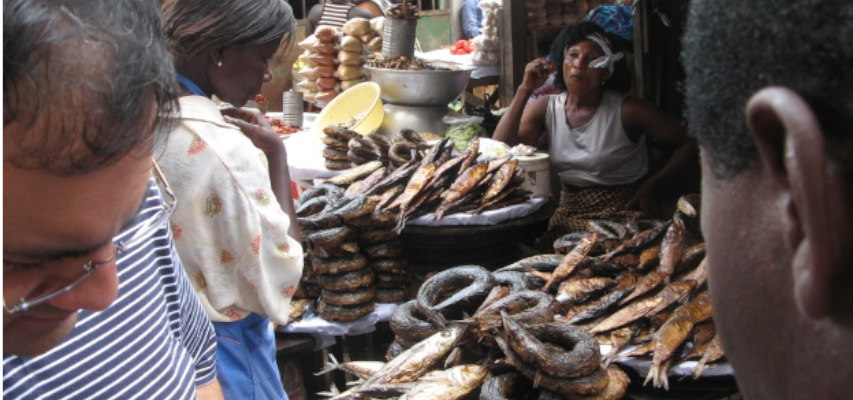
Smoked fish at Makola market in Accra, Ghana.Copyright:Michael Sean Gallagher,(CC BY-SA 2.0)
“During emergencies, conflict and other times of crises, negative coping strategies are more likely to be adopted, one of them being that women will eat last and least,” he says. “Men are prioritised over women when food is scarce, when in fact the nutritional needs are higher for women and adolescent girls.”
根据Sandrine杜利,农业的经济ist for CIRAD, the French agency for agricultural research and development, reduced household budgets have forced women to cut out fish, meat and more expensive vegetables from not only their own diets, but those of their children as well.
“Men, who usually go more out of homes, have opportunities to diversify and enrich their diets with food bought [at] street vendors or small restaurants,” she explains. The FAO says that street food has exploded in popularity across the developing world in the past 30 years, as cities and populations have expanded.
Women’s undernourishment has knock-on effects on the health of their families, as those with less access to food will be less able to offer a varied diet to children and the other relatives they care for. Pregnant and breastfeeding women can pass dietary deficiencies on to babies, which puts them at greater risk of malnutrition and stunting.
Nutrients versus weight
One example of this problem is found in rural India, where almost a quarter of women are underweight and 21 per cent of children are ‘wasted’ — too thin — and at risk of developing severe and chronic diseases, or dying.
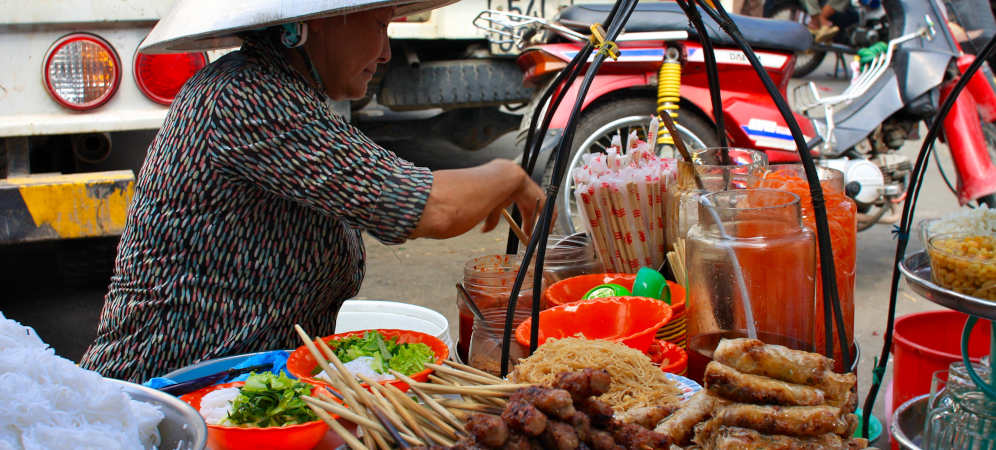
Street food in Saigon, Vietnam.Copyright:Johannes Zielcke,(CC BY-NC-ND 2.0).
Suneetha Kadiyala, a researcher at the London School of Hygiene and Tropical Medicine,has studied the issue in the state of Odisha, east India.
Her work uncovered a complex interplay between calorie intake and micronutrient adequacy. By working with women and educating them about nutrition, Kadiyala’s team managed to improve the dietary variety of both women and children — but saw little improvement in terms of weight gain.
“我们假设,饮食质量的提高d, but the women are not eating enough calories,” she says. “There might still be a negative energy balance.”
Some problems around reduced access to a varied diet are due to the influence of men, including women’s inadequate decision-making power in the household and gender-based violence, says Shraddha Joshi, a scientist at the department of women and child development in Maharashtra, western India.
Joshi works on a new project called Nav Tejaswini, which supports rural women in farming and involves both men and women in the process.
“We identify progressive men in a village and use their help, for example, in trying to achieve joint titling of property,” Joshi says. “We also encourage couples to have food together; if you want to see betterment on the plates of women, the support of men becomes very important.”
Around two billion people on the planetsuffer from micronutrient deficiency, meaning they lack important minerals and vitamins in their diet.
Micronutrients such as iron, vitamin A and zinc are crucial in developing healthy muscles and bones. Children who do not ingest these in sufficient quantities may be growth-inhibited, even if they are not underweight.
However, tackling undernourishment and improving micronutrient deficiency is about more than just providing people with low-cost food. In fact, the availability of cheap, processed food may be exacerbating the nutrition problem for women in many middle-income countriessuch as Brazil and Mexico, as well asIndia and China.
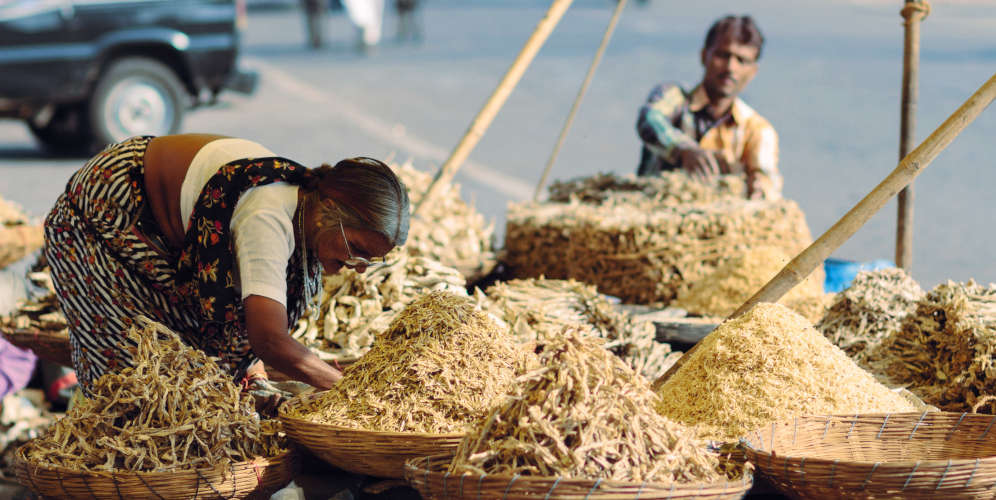
Woman selling dried fish in Nashik, western India.Copyright:Adam Cohn,(CC BY-NC-ND 2.0)
These processed foods are high in salt and fat, but provide few micronutrients. They are quick to prepare and can be more affordable than fresh food — yet an overreliance on fast food can lead to situations in which households will contain both obese parents and malnourished children.
For Kadiyala, its incorporation into the global food chain is a demand-side problem. She underlines that highly processed foods, such as cookies or potato crisps, are seen as treats and therefore part of good, loving parenting — so simply banning them may not be the best policy approach.
Furthermore, foods that are quick to prepare allow women to spend more time on activities other than cooking, and may therefore help empower them.
“The question is how we manage demand so that when parents go to the market, they make the right choice,” Kadiyala says. “Where is the sweet spot between reducing drudgery and resorting to instant noodles?”
One solution, she says, lies in minimally processed foods, such as tinned beans and frozen or pre-prepared vegetables.
An interconnected problem
Around the world, about 40 per cent of agricultural work is done by women, says the FAO’s Torero Cullen. Yet women generally have less decision-making power, less access to money and less education than men — all factors that make it harder for them to make their own choices around food and nutrition. Tackling these issues, says Torero Cullen, would meet several Sustainable Development Goals, including zero hunger, good health and wellbeing, and gender equality.
Joshi says that women are overlooked as consumers by agricultural companies, while post-harvest equipment and technology exclude women from activities such as packing and sales.
“Many companies manufacture and market exclusively to men,” Joshi says. “The power required to handle equipment, the height, everything is based on men. We need to go towards genderless technology.”
For Torero Cullen, the solution is to empower women by working with their families and community leaders, and sensitising them to women’s needs, while offering economic opportunities that fit women’s skills and responsibilities.
“In Ghana, for example, 90 per cent of all street food vendors are women,” he says. “Recognition of the importance of this activity, while working through nutrition and hygiene programmes, would provide a way of reaching female food processors.”
Such street vendors and small food shops can be great sources of cheap but healthy food, says Dury.
In Africa, more than 80 per cent ofstreet food vendors are women, who sell beans and rice or grilled plantain — meals that contain important nutrients and could be considered “neo-traditional” fast food.
“All these small food shops and vendors are overlooked by policymakers,” Dury says. “But they should be promoted, and their positive practices should be encouraged.”
But, Kadiyala notes that any strategy to tackle undernourishment must cover a range of interconnected needs — not just food provision — and meet those needs for the long-term, as evidenced by the fact that her individual project on educating women on nutrition failed to improve child weight and growth.
“Wasting, stunting and anaemia have multiple reasons, including malaria and stomach problems,” she says. “If multisectoral programmes don’t converge on the same family at the same time, they won’t work.”
The increase in global undernourishment brought on by the coronavirus pandemic, along with the greater impact this has had on women, is a warning that more work needs to be done, says Ismahane Elouafi, chief scientist at the FAO, who also formerly sat on the board of CABI, theparent organizationof SciDev.Net. *
“Even after the COVID-19 pandemic is gone, there are dark clouds on the horizon that will continue to challenge our efforts to end hunger and malnutrition,” Elouafi toldSciDev.Net. “Conflicts, climate extremes and economic swings are a reality that will not disappear, but will continue to occur and, increasingly, occur in combinations.”
*This article was corrected on 17 August, 2021, to clarify that Ismahane Elouafi no longer sits on the CABI board.





